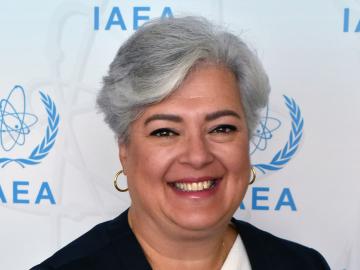Filter News
Area of Research
- (-) National Security (17)
- (-) Supercomputing (23)
- Advanced Manufacturing (1)
- Biology and Environment (40)
- Biology and Soft Matter (1)
- Building Technologies (2)
- Clean Energy (28)
- Computational Biology (1)
- Fusion and Fission (7)
- Isotopes (2)
- Materials (17)
- Materials for Computing (3)
- Neutron Science (5)
- Renewable Energy (1)
News Type
News Topics
- 3-D Printing/Advanced Manufacturing (1)
- Artificial Intelligence (4)
- Big Data (2)
- Bioenergy (3)
- Biology (5)
- Biomedical (3)
- Biotechnology (1)
- Buildings (1)
- Climate Change (6)
- Computer Science (8)
- Coronavirus (3)
- Critical Materials (1)
- Cybersecurity (2)
- Decarbonization (1)
- Environment (3)
- Exascale Computing (2)
- Frontier (3)
- Grid (2)
- High-Performance Computing (6)
- Machine Learning (4)
- Materials (4)
- Materials Science (3)
- Microscopy (1)
- Nanotechnology (2)
- National Security (7)
- Neutron Science (1)
- Quantum Computing (5)
- Quantum Science (3)
- Security (2)
- Simulation (4)
- Summit (5)
- Sustainable Energy (1)
Media Contacts

ORNL’s next major computing achievement could open a new universe of scientific possibilities accelerated by the primal forces at the heart of matter and energy.

Having lived on three continents spanning the world’s four hemispheres, Philipe Ambrozio Dias understands the difficulties of moving to a new place.

Vivien Zapf has been named deputy director of the Quantum Science Center headquartered at ORNL. The QSC combines resources and expertise from national laboratories, universities and industry partners to accelerate the design and development of novel quantum technologies.

ORNL researchers are deploying their broad expertise in climate data and modeling to create science-based mitigation strategies for cities stressed by climate change as part of two U.S. Department of Energy Urban Integrated Field Laboratory projects.

Gang Seob “GS” Jung has known from the time he was in middle school that he was interested in science.

In human security research, Thomaz Carvalhaes says, there are typically two perspectives: technocentric and human centric. Rather than pick just one for his work, Carvalhaes uses data from both perspectives to understand how technology impacts the lives of people.

A new paper published in Nature Communications adds further evidence to the bradykinin storm theory of COVID-19’s viral pathogenesis — a theory that was posited two years ago by a team of researchers at the Department of Energy’s Oak Ridge National Laboratory.

Though Scott Stewart recently received an Early Career Award from the Institute of Nuclear Material Management, he is regarded as a seasoned professional in the nuclear field with over 10 years of experience.

A multi-lab research team led by ORNL's Paul Kent is developing a computer application called QMCPACK to enable precise and reliable predictions of the fundamental properties of materials critical in energy research.

Countries around the world have unique languages, cultures, food, entertainment and governments. Yet, more than 170 countries are finding common ground in an unlikely field: nuclear material and science.




